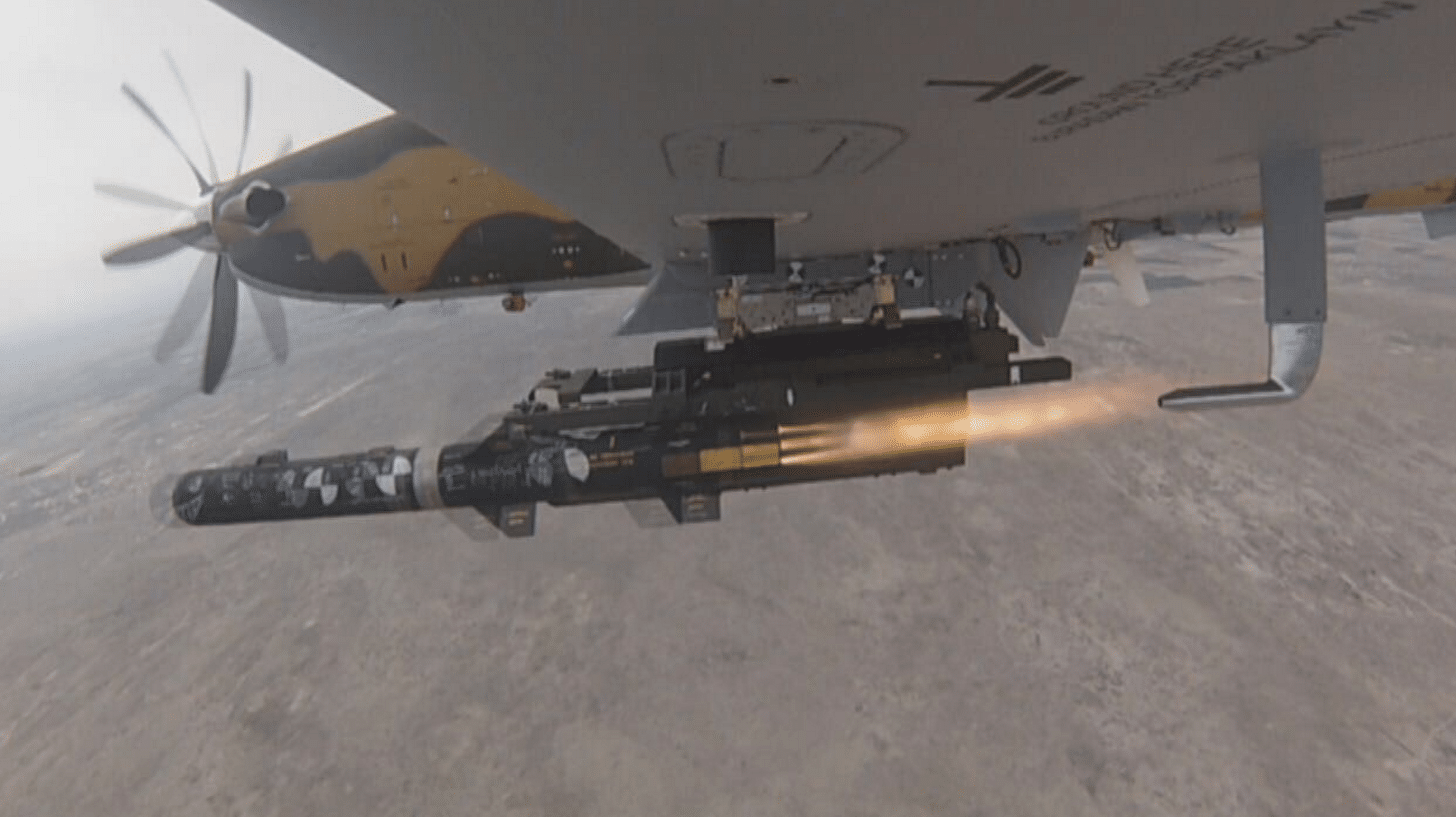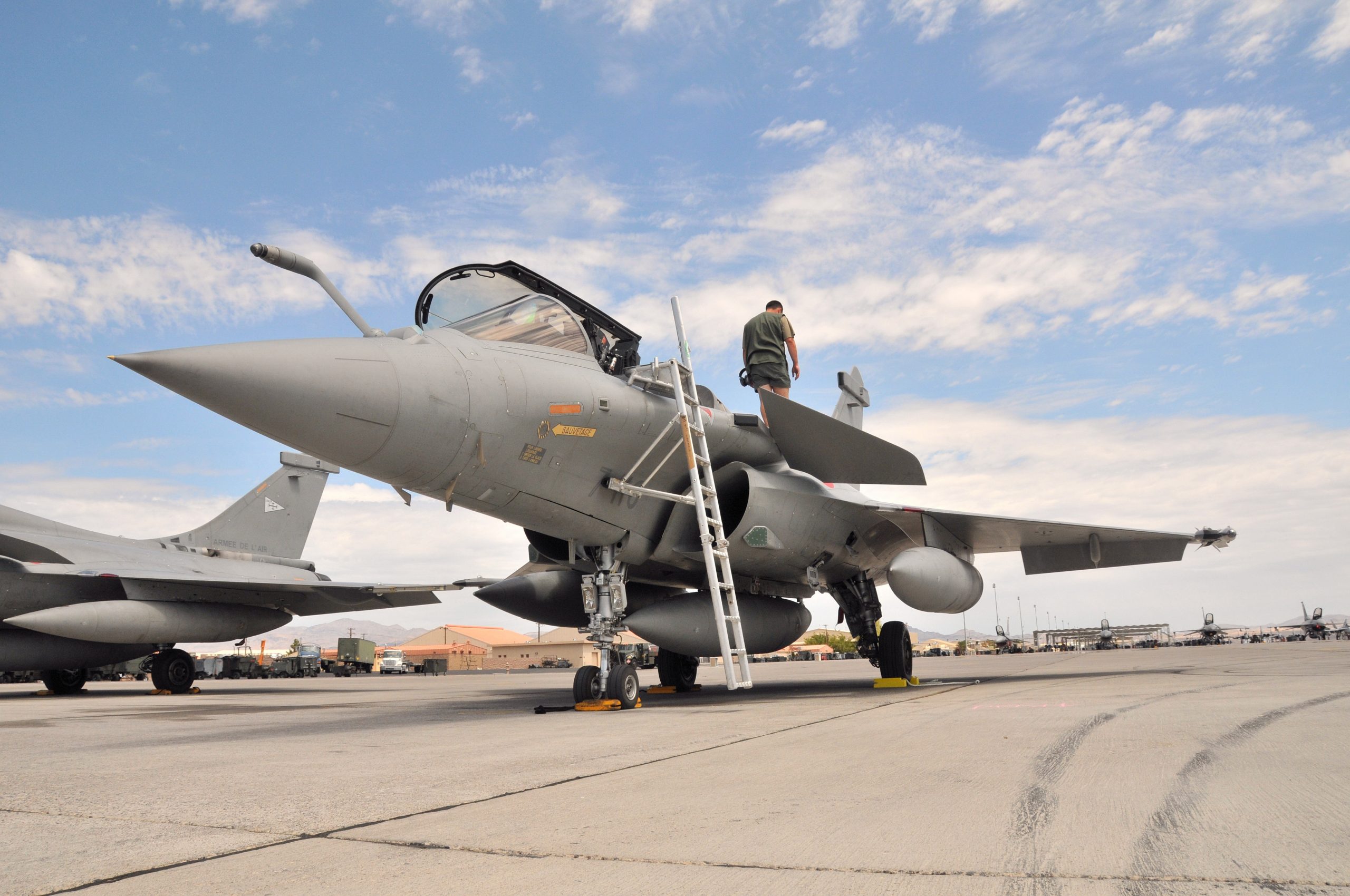2841Views 11Comments

TAI test-fires Roketsan UMTAS from Hürkuş-C close air support aircraft
Turkish Aerospace Industries (TAI) announced on April 08 that it had test-fired a Roketsan UMTAS air-to-ground anti-tank guided missile (ATGM) from its Hürkuş-C close air support (CAS) aircraft.
The Hürkuş-C is the armed variant of the Hürkuş basic trainer. Powered by the Pratt & Whitney Canada PT6A-68T turboprop engine, the Hürkuş-C can reach a top speed of 574 km/h and has a payload of 1,500 kg available through five external hardpoints.
The Hürkuş-C airframe was designed with armour reinforced airframe. Besides weapons, the lightweight attack aircraft can also be equipped with an electro-optical and infrared sensor and self-protection system for defensibility against infrared-guided surface-to-air missiles. It also has a modern glass cockpit, tactical data-link system, hands-on throttle-and-stick and onboard oxygen generation system.
The Roketsan UMTAS, also known as the Mizrak, is a semi-active laser-homing (SALH) ATGM. It has a range of 8,000 metres and weighs 37.6 kg. Besides SALH, the Mizrak could optionally be tipped with an imaging infrared terminal-phase seeker. The Mizrak could be configured with an anti-armour warhead or a high-explosive blast-fragmentation warhead.
TAI also recently test-fired the Mizraak-U from the T-129 ATAK dedicated attack helicopter.
Like the Embraer A-29 Super Tucano and IOMAX Archangel, the Hürkuş-C will be slotted as an aerial strike platform for low-intensity environments with minimal anti-air warfare (AAW) threats.
Turboprop aircraft are being marketed as low-cost alternatives to fast jets such as the Lockheed Martin F-16. Industry backers of the Super Tucano and Archangel cite substantially lower flight costs, coupled with the capability to still deploy many of the same munitions as fast jets, as major advantages.
The Archangel and Super Tucano have seen combat use in counterinsurgency theatres, most recently in the Middle East and Afghanistan, respectively. The U.S. Air Force will also examine several such aircraft this summer as part of its OA-X program.
The Turkish Armed Forces (TSK) are expected to induct the Hürkuş-C by the end of 2017. TAI is also marketing the Hürkuş-C for export, particularly to the Middle East and Africa markets.



11 Comments
by John Rue
Pakistan can buy few squadrons of them and then build small airstrips all along the border. Where ever you get locked by Indian S-400 , just land and turn off the engine. That is something you can’t do with F-16.
by Bilal Khan
I don’t think the PAF would consider these, but if they do, it will likely be for COIN operations. They can procure a squadron (16-18) and have them conduct regular ISR and light strike missions over FATA. This would free the F-16s and JF-17s from this role. If Defense News’ reporting about TAI holding Hurkus trainer talks with the PAF is true and comes to fruition, inducting the Hurkus-C would be seamless.
by Hashim Rasheed
Not negating you in any way, but why would Pakistan be looking for Hurkus trainer when they already have the K-8 and are in the process of developing the JF-17B? I dont see any reason for Pakistan to go for this option as they can customize the K-8 to fulfil CAS role, if it is required. It will also serve as a competitor in the emerging market of such aircrafts.
by Bilal Khan
Talks need not materialize. However, the Hurkus is marketed as a basic trainer – i.e. a T-37 replacement – that trainees would fly before moving on to the K-8 and JF-17B, which are (and in the JF-17B’s case: will be) used for fighter conversion and operational conversion, respectively. Still, the jury is out on whether the PAF will adopt Hurkus; they might just opt for more K-8s in the end.
by nob hamid gul
What about mkek self propelled howitzer? I was expecting your article.
by Qasim57
I wonder what the combat effectiveness of these are, in situations where anti-tank rockets would be of use.
Even A-10s were widely expected to be “wiped off” if Soviet tanks started rolling through the Fulda gap in Germany (as was expected in WW3).
by Bilal Khan
It’s not meant for anti-armour operations. Rather, counterinsurgency – specifically situations where non-state actors have limited to no anti-air warfare (AAW) capability. The rationale behind the Hurkus-C et. al is that they’re much cheaper to fly than fast-jets, so if you plan on dropping bombs or firing missiles at insurgents without any AAW capabilities to speak of, it[‘d be less costly to do it with the Hurkus-C than the F-16. It’s a contentious claim though, Leonardo believes there are certain jet platforms that have comparable operating costs, so it might be better to fully weaponize the K-8, L-39NG and M-345.
by nob hamid gul
I think the heavy Weight armed drone will do the work. No need to buy hurkus. But configuring k8 with ATGM and laser missiles is not a bad idea though.
by Hashim Rasheed
I agree with this notion. However, is there any plan in the works by either the PAF or Army Aviation to fully weaponize the K-8? I have not heard of anything in this regard, and it seems that the development of the K-8 has just not progressed further
by Nora
The new concept is to replace conventional fighter aircraft with drones. News reported that UAE is trying to rent heavy weight armed drone from UK. BAE systems Mantis, expected to perform both maritime surveillance and land armed patrols missions around Aden.
by John Rue
then it will become jamming and encryption battle. freeze communication with controller and it will be a flying kite.